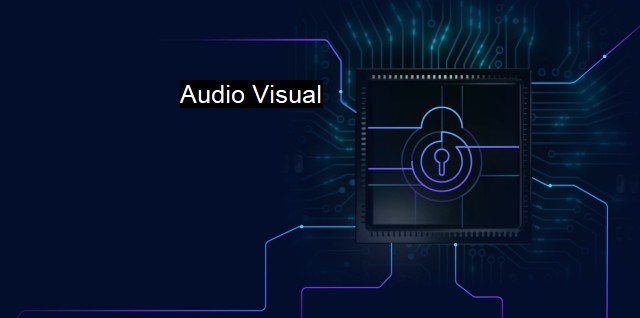What is Audio Visual?
Securing the Convergence: Protecting Audio Visual Systems in the Age of Cybersecurity
Audio Visual, or AV, refers to technology related to the use of both sound and visual components. Typically, when you think of AV, you may associate it with elements like presentations, projectors, televisions, and sound systems. within the cybersecurity context, AV stands for something entirely different: antivirus. Thus when you hear 'AV', it most likely refers to antivirus software, which is an essential tool designed to protect electronic devices.Antivirus software is a critical line of defence, developed with the primary and crucial objective of protecting computers, smartphones, or any other devices that can connect to the internet against a myriad of threats that proliferate in the online world. These threats may hide in the form of harmful software such as viruses, trojans, worms, spyware, ransomware, and rootkits, all of which strive to infect and disrupt your systems, sometimes even enabling cybercriminals to steal sensitive or private information.
Viruses work in a stealth-like manner, replicating themselves by modifying other computer programs and inserting their own code. When successful in their stealthy infiltration, these codes exert a downward pulling force on the performance of the underlying device and eventually cause harm by corrupting or damaging system data.
Recognising these threats, AV uses a variety of techniques to combat them. Most commonly, it works via an extensive database of known viruses and performs an automated scan to identify if any of them exist on the device. Any suspected files or software are then either quarantined or deleted. The key is to prevent the malware from executing and thus damaging your data or spreading further.
The evolving sophistication of viruses necessitates a corresponding evolution of antivirus software, incorporating more intuitive and proactive methods. Some examples of advanced AV techniques include behaviour-based detection, which analyses the behavior of programs and files to pick up any anomalies that could indicate malicious activity. Similarly, signature-based detection works towards identifying specific unique bits of code that malware may use, acting as clear flags (or signatures) of malicious intent.
Cybersecurity and AV not only apply to typical computer users or large corporate networks but also in an Audio Visual context from the traditional sense. The critical infrastructure for multimedia applications and presentations - such as sound systems, digital signage, projectors, video conferencing systems - have become targets for nefarious cyberattacks and, therefore, need to be protected too. A projector connected to a network can be hacked just as much as a computer can, mainly when left unprotected or lacking comprehensive AV software.
Having said this, it's important to note that while AV is critical, it alone is not sufficient to protect against all the digital threats in today's age. You also need a comprehensive and robust cybersecurity strategy that includes safe online practices, email screening and filtering, secure network connections, the use of firewall protection, routine system updates, regular backups of important data, and more. with cybersecurity risks becoming increasingly complex and wide-ranging, it is more important than ever to cultivate an overarching culture of security-awareness.
AV, within the cybersecurity context, plays a crucial role in keeping digital platforms, devices and networks secure from a broad spectrum of internal and external threats. And as viruses and malware continue to advance in complexity and scope, AV and broader cybersecurity measures will need to match pace. Therefore, never underestimate the degree to which diligent practices and robust defenses can contribute to safeguarding your virtual world.

Audio Visual FAQs
What is audio visual security?
Audio visual security refers to the measures taken to protect audio and visual information from unauthorized access or attack. This includes securing the storage, transmission, and display of audio and visual data.Why is audio visual security important in cybersecurity and antivirus?
Audio visual security is important in cybersecurity and antivirus because it protects sensitive information contained in video and audio files. These files can contain personally identifiable information, trade secrets, or other sensitive data that must be kept secure to prevent data breaches or leaks.What are some common threats to audio visual security in cybersecurity and antivirus?
Some common threats to audio visual security in cybersecurity and antivirus include ransomware attacks, malware that targets media files, data theft through recording or screen capture, and eavesdropping on audio and video communications.What are some best practices for audio visual security in cybersecurity and antivirus?
Some best practices for audio visual security in cybersecurity and antivirus include encrypting audio and visual data during storage and transmission, using secure communication channels for audio and video calls, implementing strong password policies for accessing audio visual tools, and regularly updating antivirus software to detect and prevent new threats.| | A | | | B | | | C | | | D | | | E | | | F | | | G | | | H | | | I | | | J | | | K | | | L | | | M | |
| | N | | | O | | | P | | | Q | | | R | | | S | | | T | | | U | | | V | | | W | | | X | | | Y | | | Z | |
| | 1 | | | 2 | | | 3 | | | 4 | | | 7 | | | 8 | | |||||||